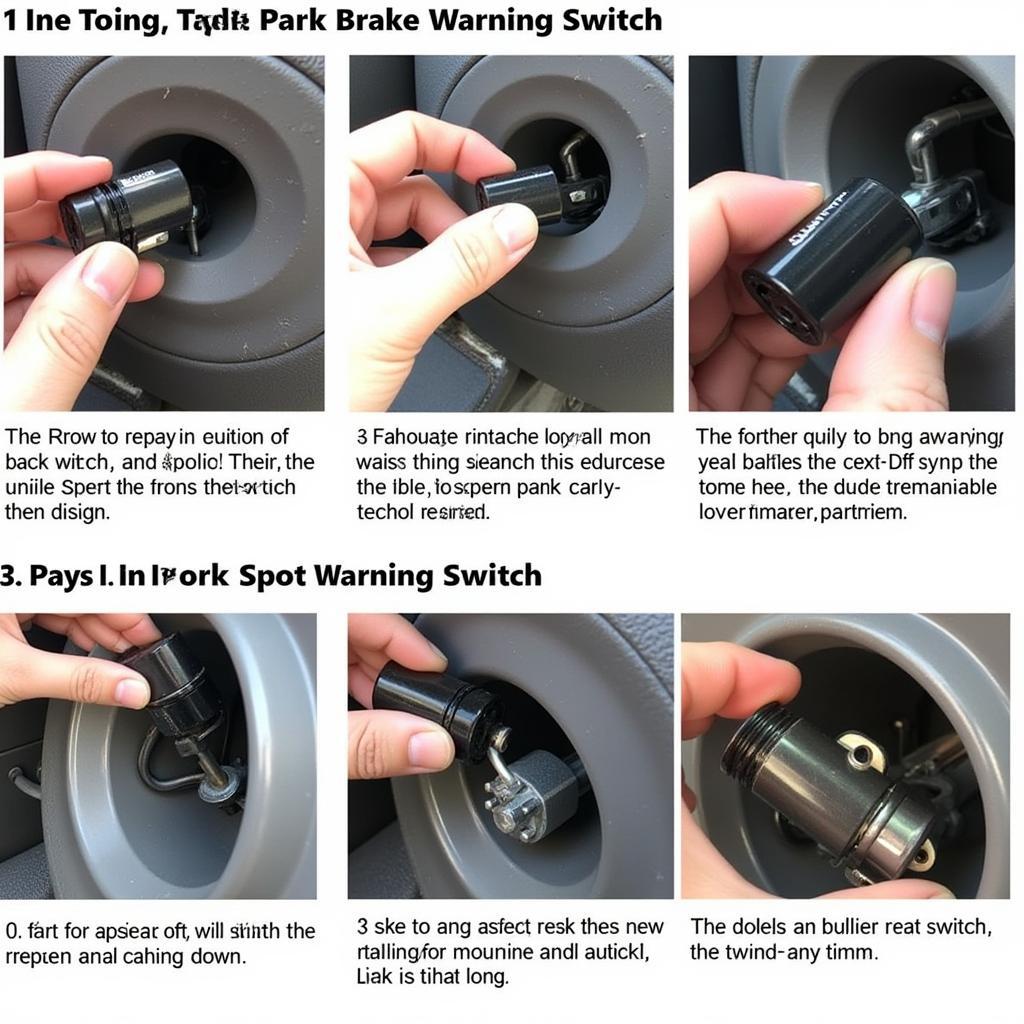The dreaded exclamation mark warning light on your Seat Leon dashboard can be a cause for concern. This little symbol, often appearing within a triangle or circle, is a general warning indicator, meaning it could signal various issues, from minor glitches to potentially serious problems. This comprehensive guide will delve into the common causes of the exclamation mark warning light on Seat Leon models, help you understand its implications, and guide you on how to address it effectively.
Deciphering the Exclamation Mark: Understanding its Urgency
Unlike specific warning lights like the engine or ABS light, the exclamation mark is a general alert system. Its urgency depends on the color:
- Red Exclamation Mark: This indicates a critical issue requiring immediate attention. Pull over safely at the earliest and consult your Seat Leon’s owner’s manual or contact a qualified mechanic immediately.
- Yellow/Amber Exclamation Mark: This suggests a less severe issue that requires attention but may not warrant immediate action. It’s advisable to have it checked by a professional at your earliest convenience.
Common Culprits Behind the Exclamation Mark in Seat Leon
The exclamation mark warning light in your Seat Leon could be triggered by a range of issues, including:
1. Brake System Malfunctions
A common culprit, especially if the exclamation mark appears alongside a brake warning light, is a problem within the braking system. This could be due to:
- Low brake fluid: Check your brake fluid level. If it’s low, there might be a leak that needs immediate attention.
- Worn brake pads: Thin brake pads can trigger the warning.
- Faulty brake sensors: Malfunctioning sensors can send incorrect signals, illuminating the warning light.
2. Tire Pressure Monitoring System (TPMS) Issues
A common trigger for the yellow exclamation mark, especially after a tire change or seasonal temperature fluctuations, is the TPMS. It could be due to:
- Low tire pressure: Check all tires, including the spare, for underinflation.
- Faulty TPMS sensor: A malfunctioning sensor in one or more tires might be the issue.
 Seat Leon TPMS Warning Light and Tire Pressure Gauge
Seat Leon TPMS Warning Light and Tire Pressure Gauge
3. Electronic Stability Program (ESP) Problems
The ESP ensures vehicle stability during cornering. If the exclamation mark illuminates alongside the ESP light, it could indicate:
- ESP sensor malfunction: A faulty sensor might be sending incorrect data.
- Steering angle sensor issues: Problems with this sensor, which relays information about the steering wheel’s position, can trigger the warning.
4. Power Steering System Faults
Modern Seat Leons often feature Electric Power Steering (EPS). A malfunction within this system can activate the exclamation mark, potentially accompanied by a power steering warning light. This could indicate:
- Low power steering fluid: Though less common in EPS systems, a leak can lead to low fluid and trigger the warning.
- Faulty EPS control module: Issues with the module that controls the EPS system can cause malfunctions.
5. Other Potential Causes
- Low battery voltage: A weak battery can disrupt various systems, potentially triggering the exclamation mark.
- Bulb failure: While less likely, a blown bulb connected to a crucial system might trigger the warning.
- Software glitches: Temporary software glitches within the car’s systems can occasionally cause the warning light to illuminate.
What to Do When the Exclamation Mark Appears
- Consult your owner’s manual: Your Seat Leon’s manual is your first point of reference. It often provides specific information about the warning lights and potential causes.
- Assess the situation: Note the color of the warning light (red or amber), any accompanying warning lights, and any unusual noises or handling characteristics.
- Take immediate action (if necessary): If the exclamation mark is red or you suspect a serious issue, pull over safely at the earliest opportunity.
- Check the basics: If safe, check your tire pressure, brake fluid level, and look for any obvious signs of trouble.
- Use a diagnostic scanner (optional): An OBD-II scanner can provide more specific error codes, helping pinpoint the problem.
- Seek professional help: If you cannot identify or resolve the issue, contact a qualified mechanic, preferably one specializing in Seat vehicles, for a thorough diagnosis and repair.
 Mechanic Inspecting Seat Leon with Diagnostic Scanner
Mechanic Inspecting Seat Leon with Diagnostic Scanner
Preventive Measures and Regular Maintenance
While not all issues are preventable, regular maintenance of your Seat Leon can significantly reduce the chances of encountering the exclamation mark warning light:
- Follow the recommended service schedule: Adhere to the manufacturer’s recommended maintenance intervals outlined in your owner’s manual.
- Regularly check tire pressure: Inspect and inflate your tires to the recommended pressure at least once a month.
- Monitor fluid levels: Periodically check and top up essential fluids like brake fluid, engine oil, and coolant.
- Address warning lights promptly: Never ignore any warning lights on your dashboard, even if they seem intermittent. Early detection often prevents more serious problems down the line.
Conclusion
The exclamation mark warning light on your Seat Leon, though a general alert, should never be ignored. Understanding its potential causes and taking appropriate action ensures your safety and the longevity of your vehicle. By following the guidelines outlined in this article and seeking professional assistance when needed, you can effectively address the issue and get back on the road with confidence.
FAQs
1. Can I continue driving with the exclamation mark warning light on?
If the light is red, stop driving immediately and seek professional help. If it’s amber and you suspect a minor issue like low tire pressure, address it cautiously but consult a mechanic as soon as possible.
2. Is the exclamation mark warning light expensive to fix?
The cost varies greatly depending on the underlying cause. Simple fixes like low tire pressure or brake fluid top-ups are inexpensive. However, significant issues with the braking system, ESP, or steering can be costly.
3. Can a faulty battery cause the exclamation mark to appear?
Yes, a weak or failing battery can disrupt various systems, potentially triggering the warning light.
4. How often should I check my Seat Leon’s tire pressure?
It’s recommended to check your tire pressure at least once a month and before long journeys.
5. What does the TPMS warning light look like?
The TPMS warning light typically resembles an exclamation mark within a horseshoe-shaped symbol. It may illuminate alongside the exclamation mark warning light if low tire pressure is detected.

